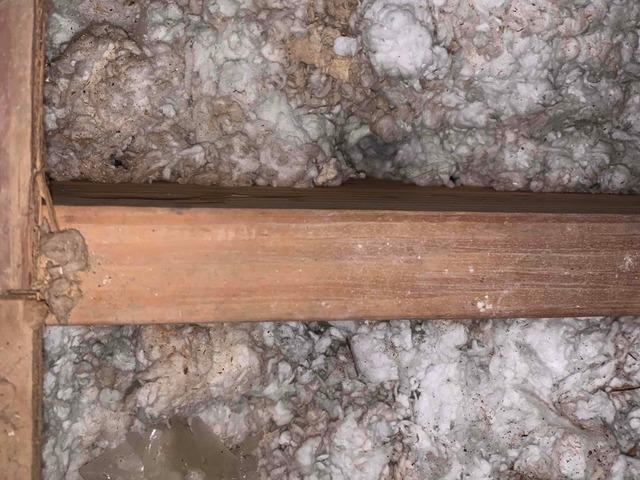
Conditioned Air Loss
Holes are naturally created during a home's construction. We cut holes for electrical, plumbing, HVAC, and other utility penetrations, and all of those holes rarely get sealed back up once the utility lines are run. These spaces add up, allowing conditioned air to escape. This leaves us with uncomfortable rooms, drafts, and high energy bills.

Dirty Insulation
One sure sign of air leakage is dirty insulation. As air is pulled up through your home it carries dust, dirt, and other small particles with it. This fiberglass insulation has been acting as a filter for that air, catching all the dirt and dust as the air escapes out of the top of your home.

Recessed or Can Lights
Recessed lighting looks great, but it costs a lot in energy loss. Air escapes around one can light at approximately 10 cubic feet per minute. Now multiply that by the number of can lights you have in your home. That's a lot of air loss!

Between Dormer Spaces - Before
Old blown-in fiberglass insulation and fiberglass bats sparsely cover the ceiling.

Cellulose Insulation
Cellulose insulation has been blown into the attic at an R-38. Along with the air sealing beneath it, this will help to prevent the loss of conditioned air to the attic and the transfer of heat into the home from the attic keeping the home comfortable.

Chimney Insulation
Chimneys create a path from the top of the home to the bottom of the home that allows air to escape. Around the chimney, we air sealed using flashing and fire caulk then installed Rockwool insulation.

Between Dormers - After
The old insulation has been removed and the ceiling has been air-sealed. PVs have been installed and a blanket of R-38 cellulose has been installed.


